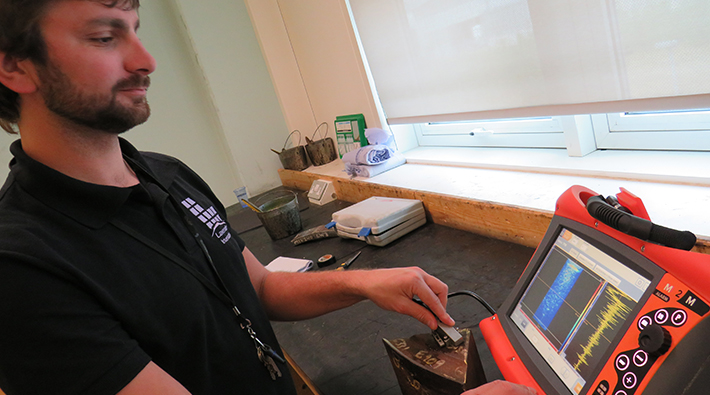R & D work conducted by Lavender has led to a better understanding of modes of inspection that can more reliably detect early stage HTHA. Results from trials have found that colonies of micro fissures, individually as small as 50 to 100mm, can be detected in certain circumstances. This is a landmark step to making inroads into more reliable detection of early stage HTHA.
HTHA generally occurs when pressurised equipment containing high hydrogen partial pressures operate at elevated temperatures (above 400°F). Over time the hydrogen diffuses through the pressure vessel wall. Diffused hydrogen can then start to form CH4 Methane. Formation of methane occurs when hydrogen depletes some of the carbon from a carbon steel and this is known as decarburization. Methane bubbles/voids form in solid steel along the grain boundaries. The combination of these accumulating voids and depletion of carbon has the potential to marginalise the material mechanical properties. This alone is an engineering concern. Over time the number of methane voids increase along grain boundaries to a degree that micro fissures (tiny cracks) begin to form connecting lines of weakness. These progressively grow into large fissures which have the potential to cause major cracks with a progressive impact on structural integrity.
Tim Armitt, who has had over 30 years’ experience within the NDT industry, has developed a unique HTHA inspection training course designed to educate advanced UT inspectors in the methodologies and techniques employed to detect the early stages of HTHA.
For more information about out HTHA course and available dates, please click here.

